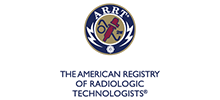Jun. 17, 2016
 Both the American Registry of Radiologic Technologists (ARRT) and the ASRT Foundation have a long history of working arm in arm on behalf of the imaging, interventional procedures and radiation therapy professions — and on behalf of quality patient care.
Both the American Registry of Radiologic Technologists (ARRT) and the ASRT Foundation have a long history of working arm in arm on behalf of the imaging, interventional procedures and radiation therapy professions — and on behalf of quality patient care.
It made perfect sense, then, for the ARRT to support the American Society of Radiologic Technologists (ASRT) by pledging $250,000 to the ASRT Foundation’s 30th anniversary celebration campaign, Positioning for a Brighter Tomorrow.
The ARRT’s donation served as the catalyst for the campaign reaching the $1 million milestone. The funds raised for this multimillion dollar campaign are helping to develop scholarships, grants and other programs for radiologic technology educators, students and clinical personnel.
The donation is a natural step for the Registry because the funds contribute to advancing the profession, according to Jeffrey Crowley, B.S., R.R.A., R.T.(R)(VI), 2014-2015 president of the ARRT Board of Trustees.
“We are especially pleased to be a part of the important work of the ASRT Foundation in providing opportunities that range from introductory student scholarships to professional scholarships for additional education. Education, together with the certification and registration that our organization provides, is key to building on the profession’s reputation for delivering quality health care and services to patients.”
Evolution Through the Years
On Nov.17, 1922, Sister M. Beatrice Merrigan of St. Anthony’s Hospital in Oklahoma City passed the first ARRT examination, making her the first registered technologist. Sister Merrigan’s ARRT exam was nothing like today’s computer-based testing experience covering several hundred items; it consisted of 20 essay-response questions and 10 actual films.
The Registry was incorporated in 1936 as the American Registry of X-Ray Technicians, with its board appointed by the Radiological Society of North America and the American Society of X-Ray Technicians. By the end of that decade, there were more than 2,400 registered technologists.
In 1944, the American College of Radiology assumed the responsibility of appointing board members along with the ASRT.
Forty years after its founding, the Registry expanded its programs by adding exams in nuclear medicine technology and radiation therapy. At that time, the organization’s name changed to The American Registry of Radiologic Technologists, a name that is more inclusive of all three areas of certification. By the end of the 1960s, ARRT would boast a total of 56,000 certificates, with some 700 in nuclear medicine technology and nearly 300 in radiation therapy.
The 1990s saw a sweeping expansion of ARRT’s offerings. The new postprimary category was launched with certification and registration in cardiovascular-interventional technology and mammography. Additional disciplines were added as technology emerged. As the millennium ended, ARRT had converted all exams from paper-and-pencil to computer-based administrations.
Nine decades after its founding, more than 325,000 registered technologists, known as R.T.s, attest to the success and strength of the ARRT.
A Deep and Growing Relationship
The roles that ARRT and ASRT fill in the profession are distinctly different, yet complement each other's goal to achieve qualifications recognition and professional development.
ARRT Executive Director Jerry B. Reid, Ph.D., explains it this way: “ARRT — the Registry — promotes patient-care standards by assessing the initial and continuing qualifications of the individual, whether an R.T. or a candidate.”
On the other hand, ASRT deals with the advancement of the profession by providing member benefits to individuals and creates standards for practice in the profession. “ARRT establishes CE requirements for individual R.T.s that mandate the number and type of activities that are reported,” said Jerry. “But ASRT, as one of the ARRT’s recognized continuing education evaluation mechanisms, is the organization that reviews, approves and offers CE activities to help technologists comply with ARRT requirements.”
Investing in Education and Growth
The ASRT Foundation is a vital partner with not only ARRT, but also with R.T.s throughout the United States. By investing in the ASRT Foundation’s programs and services, ARRT can give back to the community in ways that directly align with ARRT’s mission and values. A recent new partnership between the two organizations includes the Education and Professional Growth Grants program, which is administered through the ASRT Foundation and funded by the ARRT. R.T.s can apply for grants of up to $500 to defray the costs of continuing education, educational conference activities, educational products or postprimary ARRT application fees. Forty-eight yearly grants are available — one for each ASRT affiliate.
Today’s Endowment, Tomorrow’s Promise
Not only does the most recent endowment benefit educational growth and other professional development, it also helps to ensure that the history of the profession is preserved for decades to come. In the ASRT Museum and Archives, that history will be documented and preserved and will enable R.T.s to appreciate and celebrate their own professional history.
“Preserving history is very important,” Jerry said. “Understanding the history of a profession gives you a deeper understanding and appreciation for what individuals working together have accomplished and how far the profession has come. This points the way for the next generation of R.T.s to make their mark on the profession.”
In gratitude for the ARRT’s significant contribution, ASRT is naming a study room in the ASRT Museum and Archives in their honor.
“We congratulate the ASRT Foundation on its 30 years of outstanding service and its commitment to education,” Jeffrey added. “We are proud to play a part in this campaign and grateful for the ASRT Foundation’s support of the next generation of leaders in this profession.”